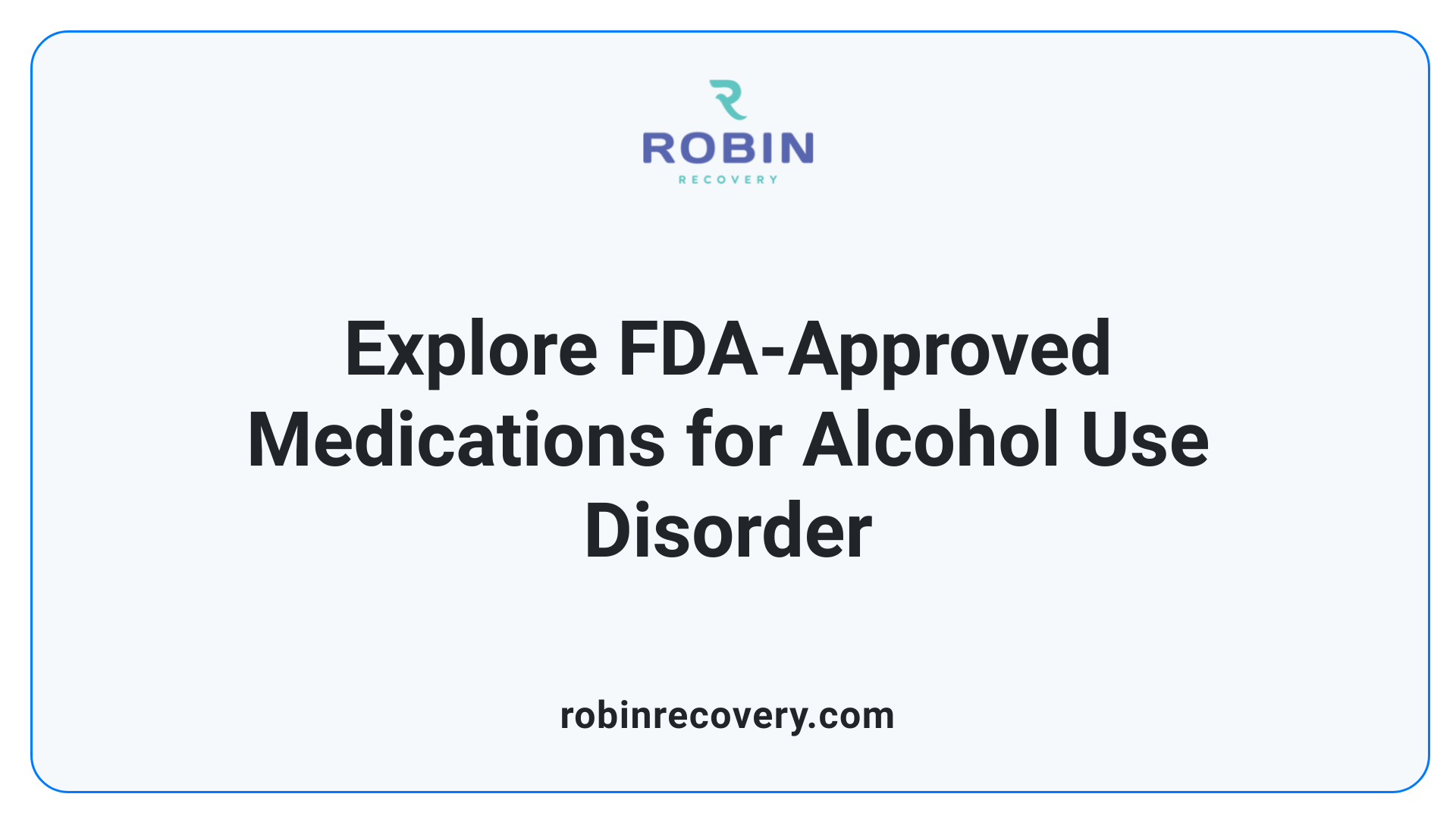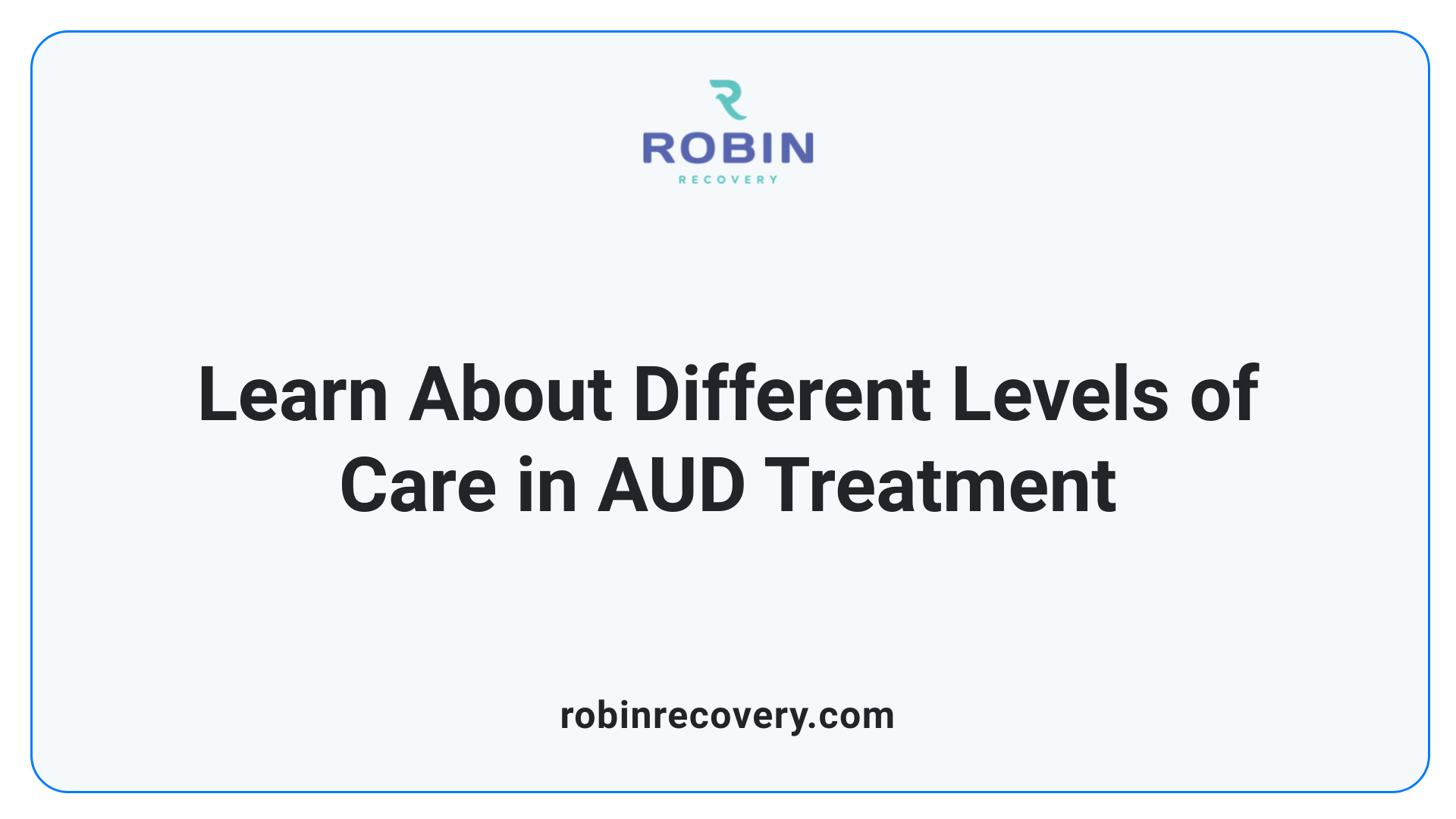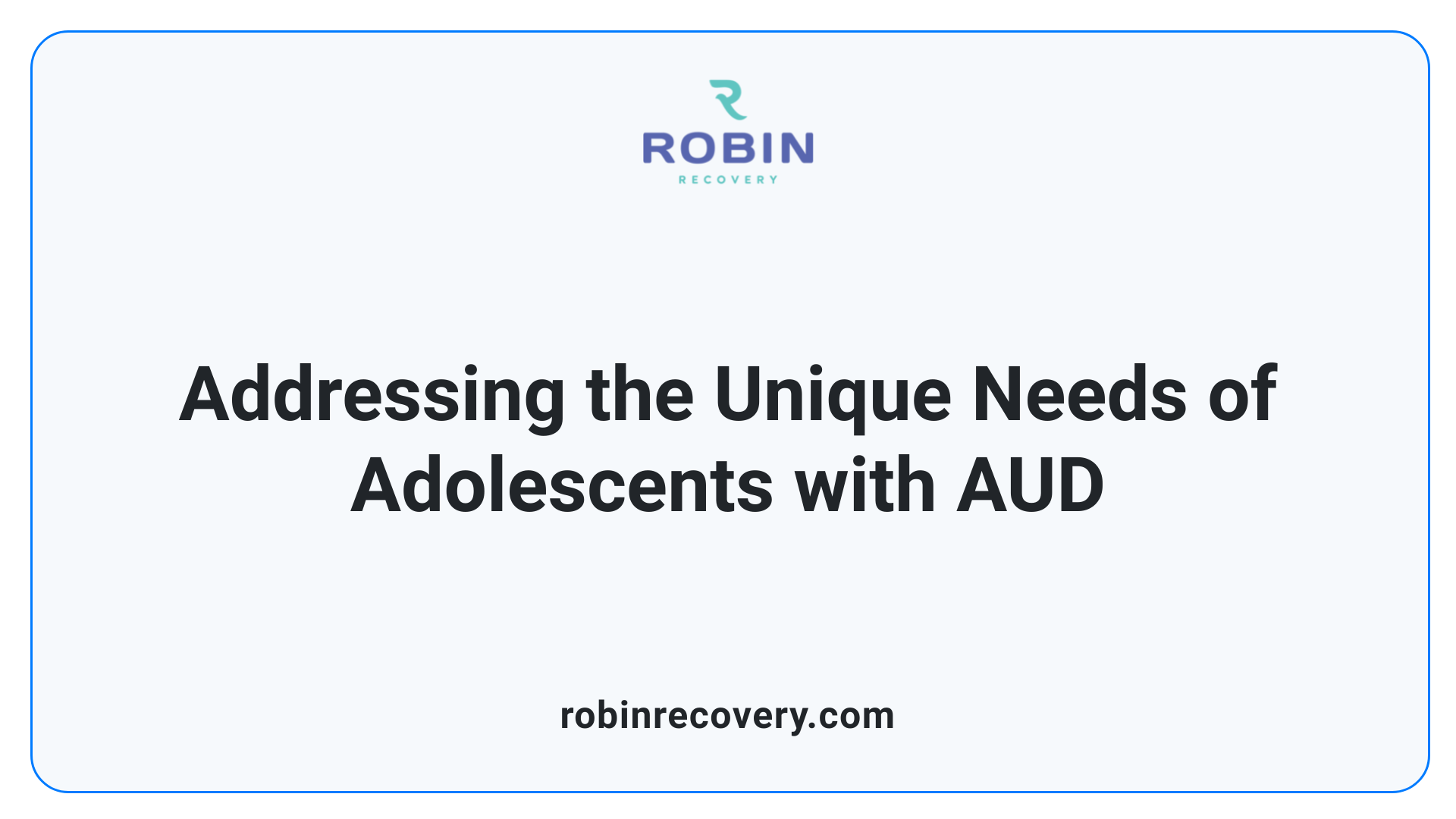Evidence Based Treatment for Alcohol Use Disorder

Introduction
Alcohol Use Disorder (AUD) is a pervasive condition impacting millions of individuals and their families. Despite the widespread prevalence and severe consequences, only a fraction of those affected access treatment. Evidence-based treatments offer a comprehensive arsenal against AUD, combining medications, behavioral therapies, and mutual support groups. This article delves into the most effective evidence-based strategies available today, offering insights and guidance for healthcare professionals and those personally impacted by AUD. We explore FDA-approved medications, innovative psychotherapy methods, supportive community networks, and crucial considerations for adolescent-specific treatments.
FDA-Approved Medications for AUD

What medications are effective in treating Alcohol Use Disorder?
The three FDA-approved medications for treating Alcohol Use Disorder (AUD) are naltrexone, acamprosate, and disulfiram. Each of these medications plays a unique role in supporting recovery:
- Naltrexone: This medication works as an opioid antagonist, blocking the pleasurable effects of alcohol, which can help reduce cravings and instances of heavy drinking.
- Acamprosate: This assists individuals in maintaining sobriety after they have stopped drinking by alleviating cravings and stabilizing chemical balance in the brain.
- Disulfiram: Disulfiram deters drinking behavior by causing unpleasant physical reactions if alcohol is consumed, which can motivate individuals to stay sober.
Effectiveness of medications
Research indicates that these medications are effective in managing cravings and reducing relapses. While naltrexone and acamprosate are particularly effective in promoting abstinence, disulfiram provides a behavioral deterrent. It's important to note that success often varies by individual, and not all patients will respond to these medications uniformly.
Combining medications with therapy
For optimal results, combining these medications with evidence-based therapies, such as cognitive-behavioral therapy (CBT) or motivational enhancement therapy, enhances treatment effectiveness. Integration of mutual support groups like Alcoholics Anonymous (AA) can further reinforce recovery efforts. A holistic approach to treatment often leads to improved outcomes and sustainable sobriety for individuals struggling with AUD.
Summary Table of FDA-Approved Medications for AUD
Medication Mechanism of Action Main Benefit Naltrexone Blocks alcohol's pleasurable effects Reduces cravings and drinking behavior Acamprosate Stabilizes chemical balance in the brain Helps maintain sobriety Disulfiram Causes adverse reactions when alcohol is consumed Deters drinking behavior
Behavioral Therapies: Changing Drinking Behaviors

What are the evidence-based behavioral treatments for Alcohol Use Disorder?
Behavioral treatments are at the forefront of addressing Alcohol Use Disorder (AUD) effectively. These interventions help individuals modify problematic drinking behavior and improve their overall lifestyle. Key evidence-based therapies include:
- Cognitive Behavioral Therapy (CBT): This structured form of therapy assists patients in recognizing and changing negative thought patterns and behaviors related to alcohol use. Studies support its effectiveness in achieving abstinence and preventing relapse, making it a vital component of AUD treatment.
- Motivational Enhancement Therapy (MET): MET focuses on enhancing an individual's motivation to change their drinking habits. It encourages patients to resolve their ambivalence about quitting alcohol, thereby fostering a greater commitment to treatment.
- Relapse Prevention Strategies: These strategies emphasize identifying triggers that lead to drinking and developing coping mechanisms. They are integral to long-term recovery by helping individuals maintain sobriety and avoid relapse.
Additional strategies include Contingency Management, Couples Therapy, and Twelve-Step Facilitation, which collectively provide a comprehensive approach to treatment. More recent integrated models recognize the importance of addressing co-occurring conditions, such as PTSD, alongside AUD, enhancing the treatment's effectiveness.
Why are integrated treatment models important?
Research indicates that integrated approaches, such as Concurrent Treatment of PTSD and Substance Use Disorders, can provide superior outcomes compared to sequential treatments. By tackling both issues simultaneously, these models address the complexities of the individual's recovery journey.
Resources for further information
For those interested in exploring more about behavioral therapies, consider searching for direct information on "Cognitive-behavioral therapy for AUD." This will yield a variety of resources and studies detailing various methodologies, outcomes, and therapeutic implementations.
The Role of Mutual Support Groups

Alcoholics Anonymous
Alcoholics Anonymous (AA) has been a cornerstone of recovery for many individuals facing alcohol use disorder (AUD). Founded in the 1930s, AA is a community-based group offering support through shared experiences. Its 12-step program encourages members to acknowledge their addiction, seek help, and drive personal growth through fellowship.
SMART Recovery
Another impactful option is SMART Recovery, which differs from AA by utilizing a more science-based approach to addiction recovery. SMART focuses on self-empowerment through cognitive-behavioral techniques that help individuals manage their thoughts and behaviors related to drinking. This format appeals to those who prefer a more structured program that emphasizes rationale and self-management.
Benefits of Peer Support
Mutual support groups, including AA and SMART Recovery, offer several benefits for those in recovery from AUD. Participants often find a sense of community and belonging, which can ease feelings of isolation. Engaging in peer support helps build accountability and motivation, as individuals share their experiences and progress. Research supports that active involvement in support groups can lead to improved treatment outcomes, fostering a greater likelihood of sustained sobriety. Together, these groups play a crucial role in the recovery journey, providing necessary resources and emotional assistance.
Levels of Care in AUD Treatment

Outpatient Care
Outpatient care for Alcohol Use Disorder (AUD) allows individuals to attend treatment while maintaining their regular daily activities. This approach is suitable for those whose condition is less severe and who can commit to regular therapy sessions without the necessity of 24/7 supervision. Treatment may include individual counseling, group therapy, and medication management.
Inpatient Care
Inpatient care, often referred to as residential treatment, provides a structured environment for individuals with severe AUD. This level of care involves around-the-clock supervision in a controlled environment, enabling patients to focus exclusively on their recovery. Inpatient facilities generally offer comprehensive programs that include detoxification, therapy, medication, and aftercare planning.
Tailoring Treatment Intensity
The choice between outpatient and inpatient options can be tailored to the individual’s specific needs, preferences, and severity of AUD. For instance, someone experiencing severe withdrawal symptoms may require intensive inpatient care, while those with less intense symptoms may thrive in an outpatient setting. A thorough assessment by healthcare providers helps determine the most appropriate level of care, ensuring flexibility and maximizing therapeutic outcomes.
Addressing the Needs of Adolescents with AUD

Adolescent-specific treatment
Adolescents are increasingly facing challenges related to alcohol use disorder (AUD). With alcohol accounting for a significant percentage of substance-related issues among young people, their treatment requires tailored approaches. Research indicates that the unique developmental, psychological, and social factors affecting adolescents necessitate specialized interventions.
Barriers to effective treatment
Despite the availability of evidence-based treatments, many adolescents with AUD do not receive adequate care. Barriers may include:
- Lack of awareness about treatment options.
- Stigma associated with mental health and substance abuse.
- Limited access to adolescent-specific treatment programs.
Psychosocial treatments
Effective psychosocial treatments for adolescents include:
- Cognitive-Behavioral Therapy (CBT): Helps adolescents recognize and modify harmful drinking behaviors.
- Motivational Enhancement Therapy (MET): Encourages internal motivation to change.
- Family-Based Interventions: Involve family members, reinforcing support systems.
Combining these approaches increases the likelihood of positive outcomes by addressing both individual behavior and family dynamics.
Implementation Challenges and Opportunities
Barriers to Evidence-Based Treatment
The treatment landscape for Alcohol Use Disorder (AUD) faces several barriers that impede the implementation of evidence-based practices. These include limited access to trained healthcare providers, stigma associated with alcohol use disorders, and insufficient awareness among patients regarding treatment options. Additionally, healthcare organizations often lack the necessary resources and infrastructure to support comprehensive treatment programs.
CFIR Framework
To address these barriers, the Consolidated Framework for Implementation Research (CFIR) provides a structured approach. This framework categorizes determinants into five domains:
Domain Description Intervention Character Characteristics of the evidence-based intervention Outer Setting External influences like policy and community support Inner Setting Internal organizational factors affecting implementation Characteristics of Individuals Attributes of individuals involved in implementation Implementation Process Steps involved in executing the intervention
Need for Comprehensive Programs
There is a pressing need for comprehensive treatment programs that integrate evidence-based practices for AUD. Current statistics show that a significant percentage of individuals do not receive appropriate treatments, partly due to these challenges. Implementing strategies based on the CFIR can optimize how resources are utilized, ensuring individuals with AUD receive the effective care they deserve.
Strategies to Reduce Alcohol-Related Harm
What are some effective strategies for reducing alcohol-related harm?
There is a variety of strategies that can effectively reduce alcohol-related harm in communities. A comprehensive approach combines policy changes, education, and screening services to address excessive alcohol consumption.
Community and Policy Interventions
- Increase Alcohol Taxes: Raising taxes on alcoholic beverages has been proven to reduce overall consumption. This strategy is particularly effective among vulnerable populations, such as underage drinkers.
- Limit Sales Hours: Restricting the days and hours when alcohol can be sold helps control access. This, in turn, can lead to a reduction in binge drinking episodes.
- Responsible Beverage Service Training: Training employees at establishments that serve alcohol can promote responsible serving practices, reducing excessive drinking in social settings.
- Enforcement of Sales to Minors Laws: Stringent enforcement of laws preventing the sale of alcohol to minors helps to decrease underage drinking, thus fostering a healthier community environment.
Education and Advocacy
Community education and awareness campaigns are vital to inform the public about the dangers and consequences of excessive alcohol use. Local advocacy groups can spearhead initiatives to promote healthier behaviors and support policy changes.
Screening Services
Screening and brief intervention services offered in both clinical and community settings have shown effectiveness in identifying and addressing risky alcohol consumption patterns. These proactive measures can lead to improved health outcomes and reduced alcohol-related problems.
Summary Table of Strategies for Reducing Alcohol-Related Harm
Strategy Description Outcome Increase Alcohol Taxes Higher taxes lead to reduced consumption Lowers consumption, especially in youth Limit Sales Hours Restrict hours/days for selling alcohol Reduces binge drinking episodes Responsible Beverage Service Training Educates servers on responsible serving practices Lowers excessive drinking in social settings Enforcement of Sales to Minors Laws Prevents underage alcohol sales Decreases underage drinking Community Education and Advocacy Raises awareness about alcohol-related harms Promotes healthier behavior Screening and Brief Interventions Identifies excessive drinking and provides support Improves health outcomes
Evidence-Based Treatments: An Integrated Approach
Integration of therapies
Treatment for Alcohol Use Disorder (AUD) involves a comprehensive approach integrating various evidence-based therapies and pharmacological options. This strategy aims to enhance recovery outcomes by allowing patients to choose the methods that resonate most with them. Cognitive-Behavioral Therapy (CBT) is widely recognized for its effectiveness in reshaping negative thought patterns and building coping mechanisms. Many patients benefit from combining CBT with other modalities such as Dialectical Behavior Therapy (DBT) and Experiential Therapy, which help them navigate emotions and interpersonal relationships during recovery.
Psychosocial and pharmacotherapy
Pharmacologic treatments play a crucial role in managing AUD, with three FDA-approved medications: Naltrexone, Acamprosate, and Disulfiram. Naltrexone helps reduce cravings by blocking the pleasurable effects of alcohol, while Acamprosate alleviates withdrawal symptoms after cessation. Disulfiram acts as a deterrent by causing unpleasant reactions if alcohol is consumed. Integrating these medications with behavioral therapies like Motivational Interviewing and Twelve-Step Facilitation can increase engagement and promote sustained recovery.
Importance of individual tailoring
The effectiveness of AUD treatments largely depends on tailoring them to meet individual needs. It's crucial to consider co-occurring mental health disorders, personal preferences, and the severity of alcohol use when developing a treatment plan. An integrated, individualized approach maximizes patient adherence and overall success in overcoming alcohol use challenges. With less than 10% of those with AUD receiving appropriate treatment annually, a focus on implementation strategies and access to comprehensive care is critical for improving treatment rates and outcomes.
The Public Health Importance of Treating AUD
Impact on public health
Alcohol Use Disorder (AUD) is a significant public health issue affecting millions of adults in the U.S. and worldwide. Approximately one-third of American adults experience AUD during their lives, contributing to serious health risks, including medical and psychiatric comorbidities, along with early mortality. With the staggering statistic of 95,000 annual fatalities linked to alcohol-related causes, addressing AUD is crucial for enhancing population health.
Epidemiology and costs
The economic burden of AUD in the U.S. is estimated at $249 billion annually, underscoring its impact not only on individuals but also on healthcare systems and society at large. Furthermore, the condition accounts for significant disability-adjusted life years (DALYs), with 1.6% for females and 6.0% for males, highlighting the urgency for effective interventions.
Urgency of treatment
Despite the availability of evidence-based treatments for AUD, only less than 10% of individuals seek or receive appropriate care in a given year. This stark reality underscores the pressing need for increased availability and awareness of effective treatment options to reduce both the personal and societal impacts of AUD.
Conclusion
Evidence-based treatments for Alcohol Use Disorder offer a powerful means of addressing a significant public health challenge. With comprehensive approaches combining pharmacological and behavioral therapies, individuals with AUD have pathways to recovery that can be adapted to their unique circumstances. Public health strategies can further aid in reducing alcohol-related harms, emphasizing the need for accessibility and widespread implementation of these evidence-based interventions. As healthcare professionals and communities rally to improve treatment delivery, fostering environments that support individuals and families through recovery will be crucial to combating this pervasive disorder effectively.
References
- Recommend Evidence-Based Treatment: Know the Options
- Evidence-Based Treatments for Alcohol Use Disorder
- Treatment for Alcohol Problems: Finding and Getting Help
- Evidence-based treatment for alcohol use disorders: A review ...
- Implementation of evidence-based practice for alcohol and ...
- Evidence-Based Treatments for Substance Use Disorders | Focus
- Evidence-based models of care for the treatment of alcohol use ...
- Pharmacotherapy for Adults With Alcohol-Use Disorders in ...
- Addiction Treatment Methods | Evidence-Based Practices
- Evidence-Based Practices Resource Center - SAMHSA
